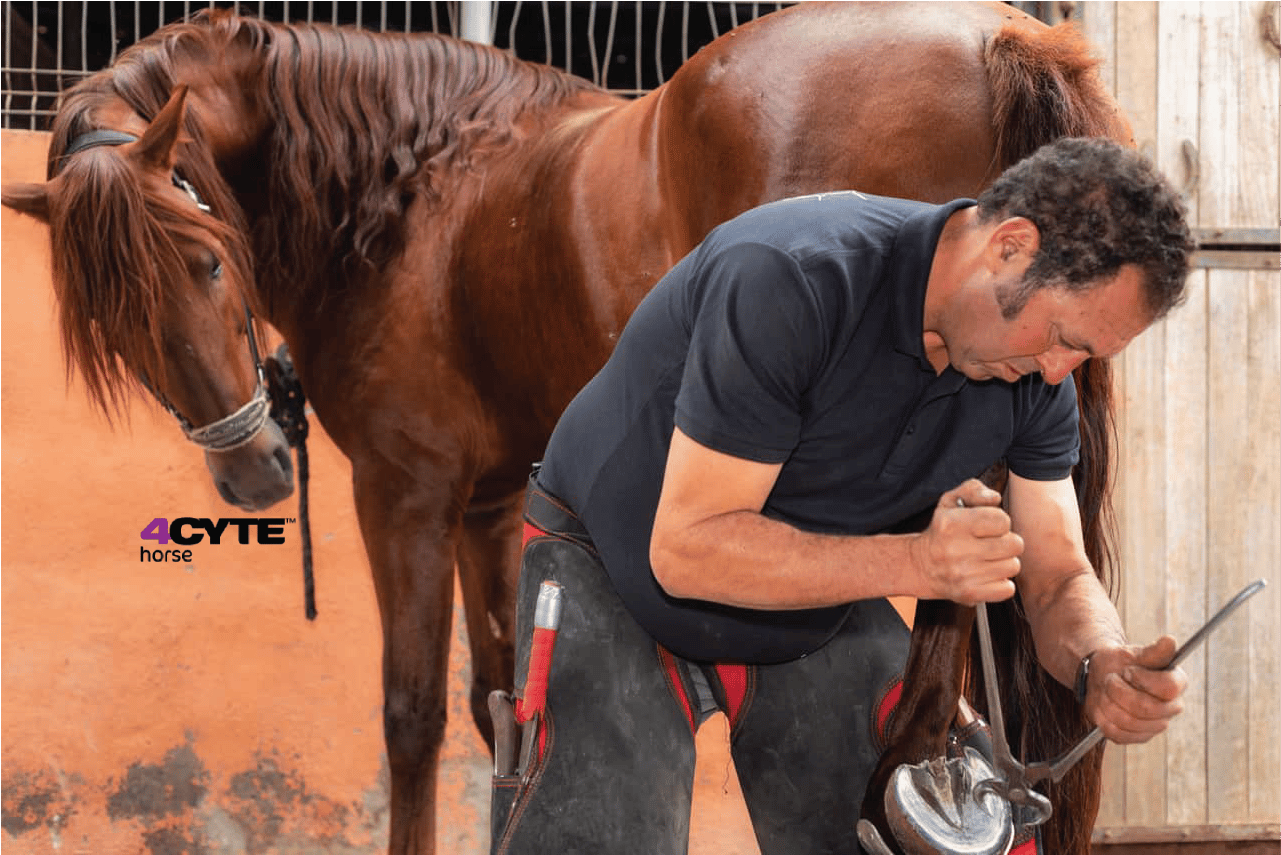Helping your arthritic horse stay comfortable – Farrier edition

A farrier’s involvement in your horse’s care regime is not limited solely (pardon the pun) to their hooves. Angles and alignment throughout the lower limb are an important aspect of consideration when your farrier is balancing your horse’s feet – and special attention must be paid for arthritic horses requiring additional comfort and expertise.
Senior horses may have trouble standing on three legs or having their hips over-flexed when being shod or trimmed behind. Those with painful joints may express behavioural issues when it’s time for the farrier, simply because they associate the procedure with pain. While you cannot expect your farrier to position themselves or their stands lower than what is required to carry out their job safely – it is appropriate to alert them to your horse’s needs, so if they sense your horse is struggling, they can accommodate with shorter intervals and more frequent rest breaks. A horse unable to stand due to pain response in the short duration of trimming or nailing a shoe on, is likely to need veterinary intervention.
Poor hoof and lower limb joint angles can contribute to joint stress, lower back pain and can accelerate the effects of arthritis, notably in the fetlock, pastern and coffin joints. While leaving the toe too long can cause trips and falls, horses with little to no heel may weaken the tendon and ligament structures that maintain the integrity of those joints. Both long toes and under run heels contribute to negative angles of the coffin joint, resulting in poor athletic performance and discomfort for the horse.
Having an experienced farrier that can work in conjunction with your veterinarian as they interpret x-rays, is considered best practice management. While much can be done to assume the best outcome from the exterior, having a look at what’s going on inside the leg can shed more light toward preventative and holistic treatment. Your farrier will have exact parameters to work to and can provide specialty shoes such as wedged heels or frog pads to alleviate discomfort, or ‘float’ parts of the hoof that are required to regrow. Emerging technology with glue on shoes may even be of benefit to a horse with poor quality hoof growth that cannot withstand nails in the hoof wall.
Your veterinarian can also work with you to determine the best course of action for pain and inflammation management. Advice from an equine nutritionist to correct dietary deficiencies such as calcium, biotin and protein, are all important contributors to hoof growth.
As they say: no hoof = no horse.